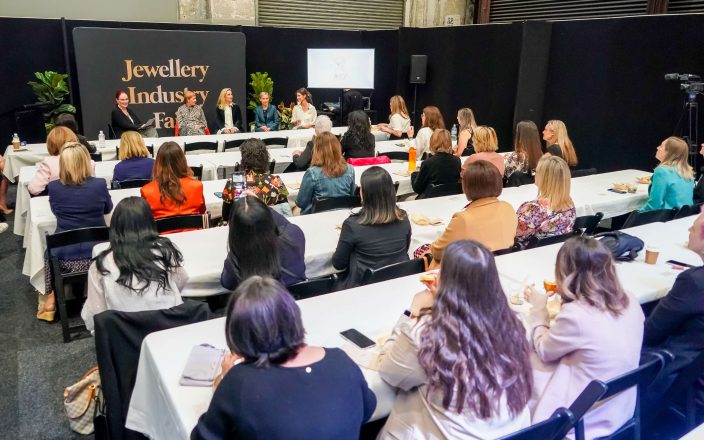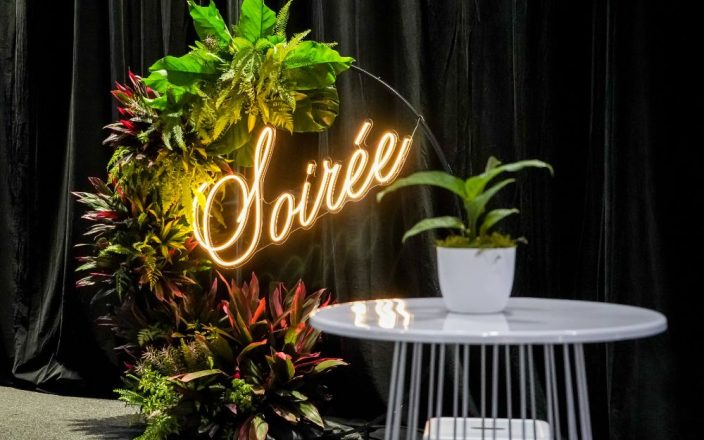In jewellery design, a new frontier is emerging. One that not only embraces sustainability but also taps into an unconventional source of precious metals. Think electronic waste, where discarded gadgets harbour a treasure trove waiting to be transformed into outstanding jewellery pieces. Kunning Ding’s research encapsulated in the 2022 article Creating New Jewellery with Precious Metals Recovered from Electronic Waste, unveils a golden opportunity for the jewellery industry to redefine its practices and contribute to a more sustainable future.
E-waste’s Hidden Riches
In an industry focused on beauty and craftsmanship, electronic gadgets are discarded at an alarming rate due to their rapid obsolescence. Despite this, a compelling relationship awaits exploration beneath the surface. Our tech companions, driven by the relentless pace of technological advancement, leave behind a silent legacy in e-waste. According to Ding’s research, the electronic and electrical equipment discarded in 2021 surpassed 57 million tonnes, with less than one-fifth undergoing recycling. This staggering amount underscores the stark reality that electronics are swiftly ending up in landfills. Amidst this discarded tech lies a valuable asset—Printed Circuit Boards (PCBs)—boasting nearly 30 percent metal content, including gold.

Hydrometallurgy
Traditionally, metal recovery from e-waste involves energy-intensive methods such as pyrometallurgy. Ding’s research introduces us to hydrometallurgy. This technique utilises liquid chemical reagents to recover precious metals from e-waste under laboratory conditions selectively. Unlike its industrial-scale counterparts, hydrometallurgy enables smaller-scale, local recovery, reducing the environmental impact associated with traditional methods.
Imagine having access to a sustainable source of gold. Hydrometallurgy opens the door to a green revolution in metal recovery, aligning seamlessly with the industry’s commitment to responsible sourcing.
From E-waste to Wearable Art
Ding’s research isn’t just about metal recovery, it’s about the transformative journey from e-waste to wearable art. By delving into techniques like electroforming and electro-displacement plating, jewellery designers can breathe new life into discarded materials, crafting unique and meaningful pieces. The metamorphosis from e-waste to wearable art signifies a paradigm shift in design philosophy—turning what was once considered waste into a canvas for creativity. Jewellery’s narrative resonates with modern consumers’ desire for products that have meaning and purpose, which is more than a design choice.
Connecting Through Emotions
There has always been an emotional connection between jewellery artistry and craftsmanship. Ding’s research highlights the significance of infusing recycled materials with narrative significance. By using empathy design methodologies, designers can create a bridge between the jewellery and the consumer by telling the compelling story of e-waste transformation. Imagine a piece of jewellery not only as a beautiful accessory but as a tangible reminder of environmental and sustainable responsibility. Emotional connections with consumers are more than just selling points. They play a key role in raising awareness and fostering a sense of shared responsibility among consumers.

Sustainable Design for a Changing World
With the jewellery industry at a crossroads, Ding’s research offers a solution that is more than just a sustainable alternative—it aligns with the broader Sustainable Development Agenda of the United Nations. By focusing specifically on Goals 11, 12, and 13, Ding’s work provides a blueprint for the industry’s future by focusing on sustainable consumption patterns, production patterns, and the creation of safe and sustainable cities. Style and sustainability effortlessly blend in artistic expressions, serving as powerful agents of positive transformation. The integration of e-waste can provide an opportunity and spark the potential for meaningful change.
Ding’s research beckons the jewellery industry to step into a future where discarded gadgets are an opportunity. It invites jewellers to embrace hydrometallurgy, turn e-waste into wearable art, and connect with consumers through the emotional resonance of sustainable design. This isn’t a call for innovation—it’s an invitation to shape a future.
Pioneering Sustainability
Distinguished businesses are shaping a new narrative—one that intertwines luxury with responsibility. Among these trailblazers is LYLIE Jewellery, an artisanal brand hailing from the UK. Their exquisite creations tell a unique story—a story of salvaged gold and silver, meticulously sourced from e-waste, dental waste, and their Gold Exchange. With an unwavering commitment to sustainability, LYLIE adorns their pieces with recycled-antique or lab-grown diamonds, redefining the art of responsible luxury.
Venturing into the realm of e-waste alchemy, AuTerra Jewellery from South Africa embarked on a transformative journey. Born out of a fine arts background, their passion for sustainability ignited a creative spark. Starting with silver recycled from photographic waste, they later partnered with an e-waste refiner in 2015, crafting the world’s inaugural ring from gold gleaned from discarded electronics. Their minimalist designs, shaped from precious metals reclaimed from circuit boards, epitomise the ethos of slow fashion and mindful adornment.
A collaboration that echoes in the corridors of sustainability is Bayou With Love, masterminded by Twilight actress Nikki Reed. Teaming up with Dell, this avant-garde brand converts e-waste into jewellery. Dell’s eco-friendly process extracts gold from old computer motherboards, embodying a circular design philosophy. Creating stunning pieces from recycled gold extracted from discarded technology, Bayou With Love embodies sustainable production and conscious sourcing.
On the horizon of innovation, Oushaba, born in 2023 in the vibrant streets of London, introduces a collection that redefines wearable art. Connected Salvage breathes life into fragments of repurposed e-waste—mobile phone circuit boards, USBs, charging cables, and plugs. Encased in recycled 22kt yellow gold, 18kt white gold, and silver, Oushaba’s creations challenge preconceptions, transforming technological remnants into timeless treasures. A manifestation of artistry and environmental consciousness, each piece resonates with a commitment to a more sustainable future.
As a result of these visionary businesses, e-waste is seamlessly woven into the jewellery industry’s fabric, harmonising creativity with responsibility. These brands redefine craftsmanship through their innovative designs and ethical practices, as well as inspire a shift towards a more environmentally friendly and conscientious approach to jewellery manufacturing.
Jewellers, the golden opportunity of e-waste is here. When broken or unwanted electronics are dumped in landfills, toxic substances like lead and mercury can leach into soil and water. By redefining the industry and leaving a lasting legacy of sustainability and beauty, everyone can prevent the harmful consequences of improper disposal. The world is ready to adorn itself with jewellery that tells a story of transformation and a commitment to a better, more sustainable tomorrow.


